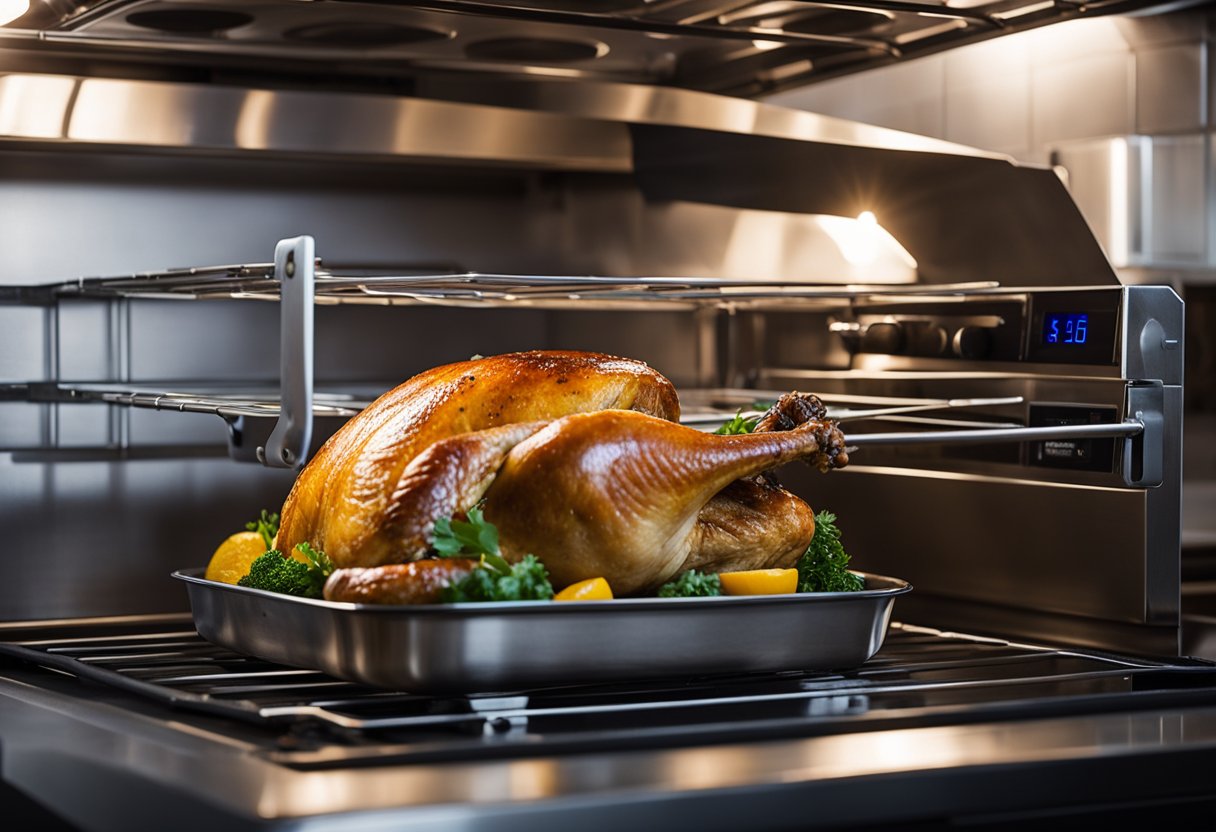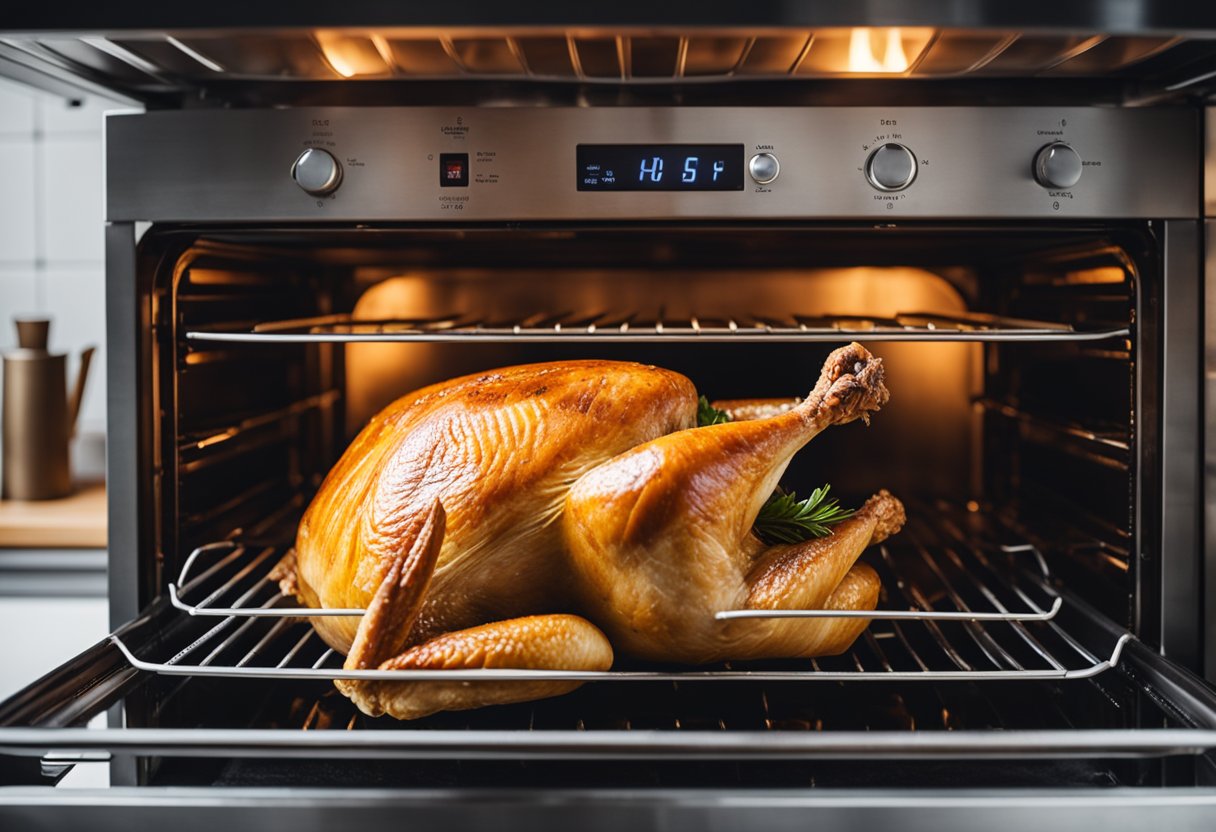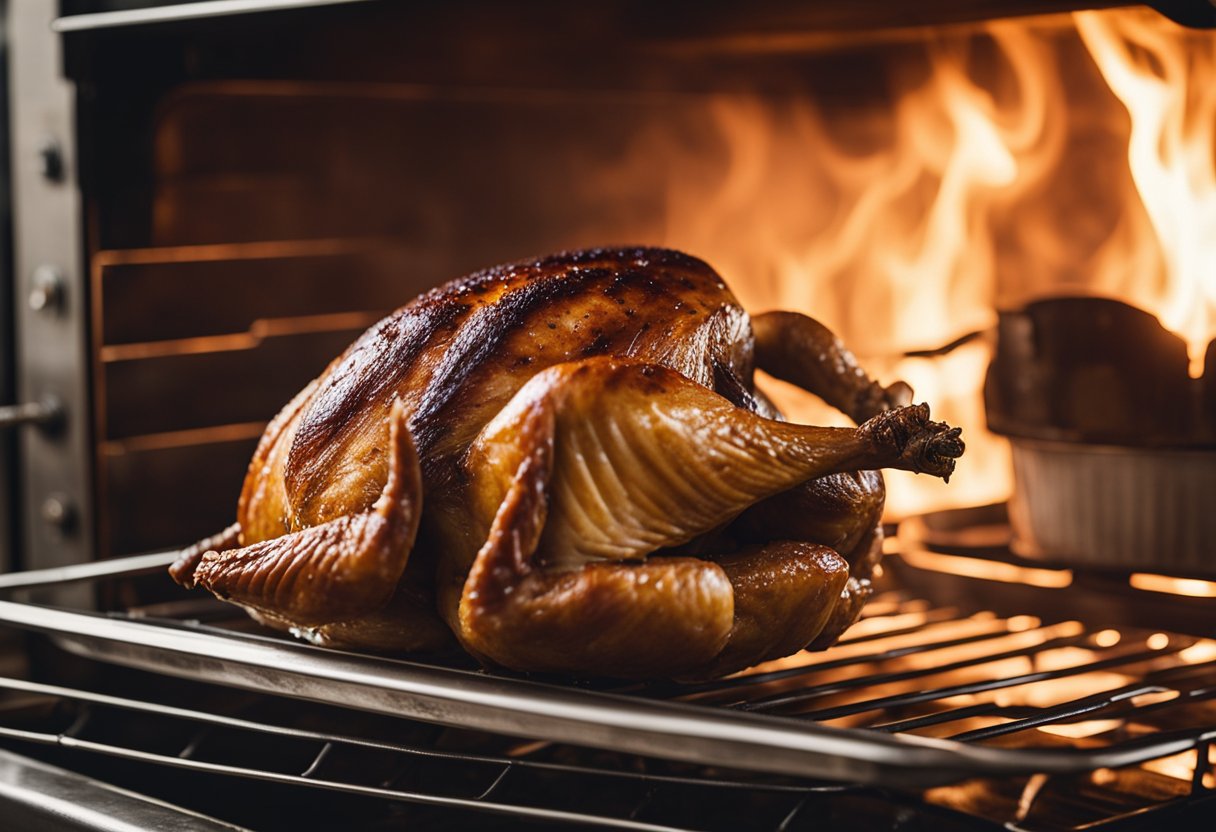Reheating a precooked turkey offers the convenience of enjoying a delicious holiday staple without the extensive preparation time. The trick lies in warming it through to the perfect temperature without losing moisture, which can turn a potentially succulent meal into a dry disappointment. Your goal is to retain the turkey’s tenderness and flavor which made it the centerpiece of your feast in the first place.

A common concern is ending up with meat that’s too dry. You want to recapture that fresh-from-the-oven taste, texture, and juiciness. The right technique involves both the tools you use and the process you follow. Whether you’re serving it up for a special occasion or simply enjoying a hearty meal, knowing how to reheat your turkey properly will turn leftovers into a delightful encore.
Preparing to Reheat Precooked Turkey

To ensure that your precooked turkey remains moist and delicious, attention to proper thawing and reheating techniques is vital.
Thawing and Bringing to Room Temperature
If your turkey is frozen, it’s important to thaw it properly before reheating. For food safety, it’s best to thaw your precooked turkey in the refrigerator. Depending on the size, this process can take a couple of days, so plan accordingly. Once thawed, let the turkey sit at room temperature for about an hour before reheating. This helps it reheat more evenly.
- Thawing Tips:
- Place the turkey in its original packaging on a tray to catch any leaks.
- Allow approximately 24 hours of thawing for every 4 to 5 pounds of turkey.
- Never thaw turkey on the counter, as it can encourage bacterial growth.
Choosing the Right Reheating Method
You have various methods at your disposal to maintain moisture. The oven is traditional and effective for reheating a whole turkey. Preheat it to 325°F and place the turkey in a roasting pan. Covering it with foil will prevent moisture loss. A Dutch oven can also be used for this purpose.
For more individualized portions or a quicker method, the microwave could be an option, though it’s a challenge to keep the turkey from drying out, so it’s best used for moist leftovers like soups or casseroles.
For a hands-off approach, a slow cooker may be used by adding broth and setting the appliance on low, but it’s generally more suited for turkey carved off the bone. When using any method, ensure the turkey reaches an internal temperature of 165°F to comply with food safety standards.
- Reheating Methods:
- Oven: Cover turkey with foil, and reheat at 325°F.
- Microwave: Use for moist leftovers, cover and rotate the dish for even heating.
- Slow Cooker: Add broth, set on low, suitable for turkey off the bone.
Remember to store leftovers in airtight containers or zip-top bags to maintain freshness. Properly reheating your turkey can extend the enjoyment of your Thanksgiving or Christmas feast.
Reheating Methods to Keep the Moisture In

To reheat your precooked turkey without losing its juiciness, it’s essential to use techniques that maintain moisture. Whether you prefer the oven, stovetop, or microwave, careful handling can ensure a moist and delicious result.
Oven Reheating Techniques
When reheating turkey in the oven, opt for the “low and slow” approach to keep it moist. Preheat your oven to 275°F and place your turkey in a baking dish. Then:
- Add some chicken broth or stock to the baking dish, just enough to cover the bottom.
- Cover the turkey with aluminum foil to trap the moisture.
- Reheat until the internal temperature reaches 165°F. Use a meat thermometer to check.
Stovetop Warming Strategies
For stovetop reheating:
- Slice the turkey so it warms evenly.
- Add a mix of turkey gravy and broth to a skillet, enough to cover the bottom.
- Warm the gravy mixture on low heat and add the turkey slices.
- Cover with a lid and let it simmer gently, making sure the turkey is heated through without boiling the gravy.
Utilizing the Microwave Without Drying Out
Microwaving can be a swift method, but it also risks drying out the meat. To avoid this:
- Place turkey slices in a microwave-safe dish.
- Drape a damp paper towel over the turkey or add a splash of broth or gravy.
- Heat on medium power in short bursts, checking the moistness regularly.
- Stop heating once the turkey reaches 165°F; do not overheat.
Frequently Asked Questions

When reheating precooked turkey, maintaining its moisture is your top priority. The following FAQs address various reheating methods tailored to keep your turkey succulent.
What’s the best method to warm up sliced turkey in the oven?
To warm up sliced turkey in the oven, set the temperature to 275°F. Arrange the slices in a single layer in a baking dish, add a splash of broth or water, and cover tightly with foil to trap steam and keep the turkey moist.
Can you give tips for reheating turkey in the microwave while keeping it moist?
In the microwave, place slices of turkey on a microwave-safe dish. Cover them with a damp paper towel to add moisture and prevent drying out. Use the “reheat” setting or set the microwave to 50% power, heating in one-minute increments until warm.
Is it safe to reheat frozen cooked turkey, and if so, how?
Yes, you can safely reheat frozen cooked turkey. Thaw it in the refrigerator for 24 hours before reheating. Once thawed, reheat in a 275°F oven, covered with foil, until it reaches an internal temperature of 165°F.
What’s the ideal way to reheat a turkey in an air fryer for crispy skin?
For crispy skin, preheat your air fryer to 350°F. Place turkey pieces in the basket without overcrowding and heat for 3-4 minutes, checking frequently to ensure the skin doesn’t burn.
Could you explain how to properly reheat a turkey breast in the oven?
To reheat a turkey breast in the oven, preheat to 325°F. Place the breast in a roasting pan with a bit of broth or water. Cover with foil to retain moisture and heat until the internal temperature reaches 165°F.
How often is it safe to reheat leftover turkey?
Leftover turkey should ideally be reheated only once. Reheat the portions you intend to consume to an internal temperature of 165°F and avoid reheating the entire turkey multiple times to maintain quality and food safety.
